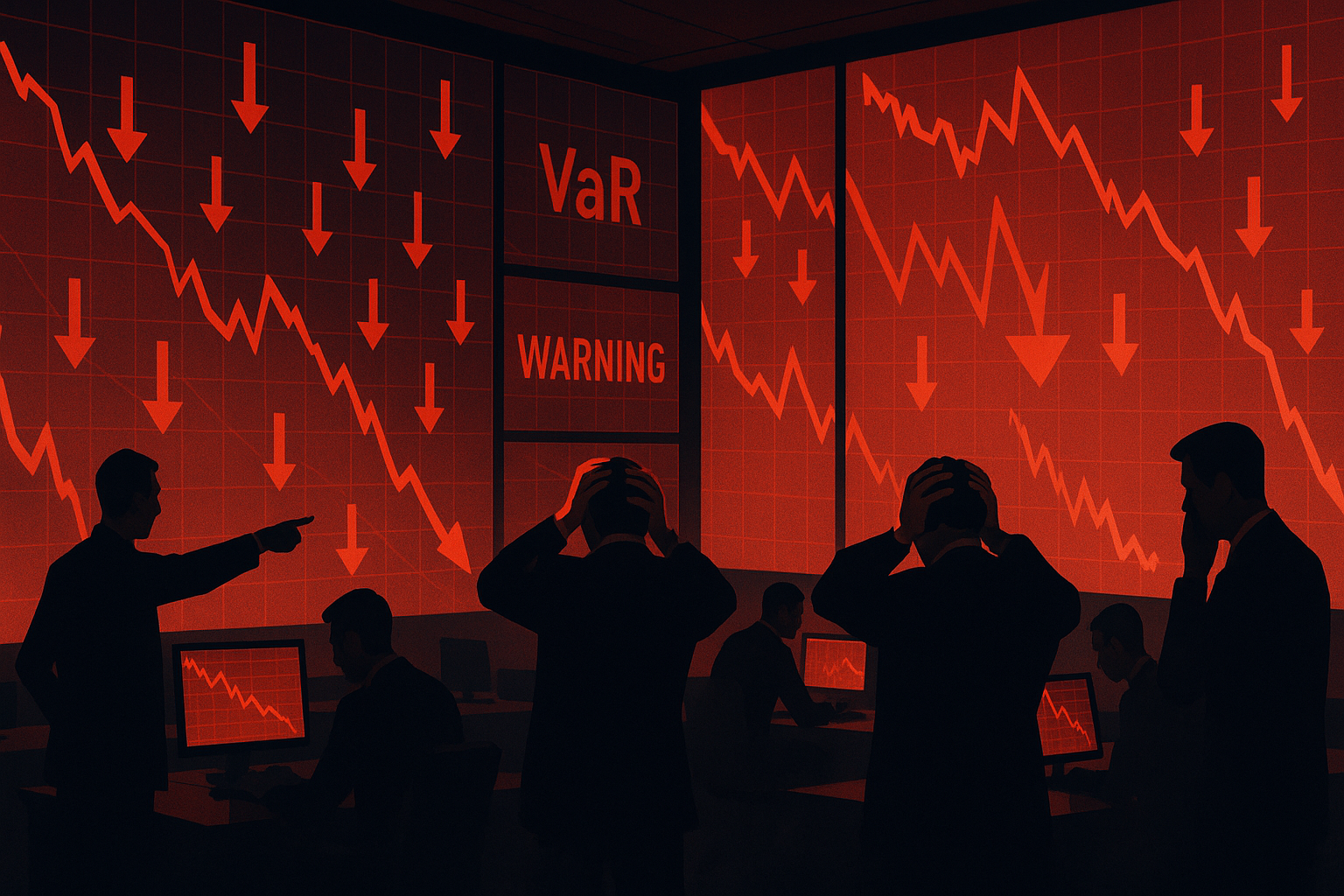When Goldman Sachs starts throwing around phrases like "degrossing extremes," you can almost smell the fear wafting from Greenwich hedge fund offices. We're witnessing that familiar Wall Street spectacle—fund managers slashing positions faster than teenagers delete text messages when their parents walk in.
I've been covering market meltdowns since the 2008 crisis, and there's something eerily familiar about what's happening now. The parallels between March 2020 and our current August 2025 situation aren't what most talking heads on CNBC would have you believe. This isn't about fundamentals—at least not primarily. It's about what I call "mechanical panic."
Look, these aren't emotional sell-offs where portfolio managers hide under their ergonomic standing desks. This is cold, algorithmic terror—risk models simultaneously flashing red across the industry, demanding immediate position reductions.
The irony is delicious, really. These sophisticated risk management systems—designed to prevent catastrophe—are creating one when they all trigger at once. It's like everyone in a crowded theater calmly deciding to leave through the same door at the same time. Nobody's running, but everyone still gets crushed.
The mechanics are straightforward (if painfully predictable).
Market volatility spikes for whatever initial reason—maybe China concerns, maybe interest rate surprises, maybe someone spilled coffee on a critical server. Suddenly, every hedge fund's Value-at-Risk model lights up. These models don't philosophize about economic fundamentals; they just mechanically demand position-cutting when certain thresholds get crossed.
And then? Synchronized selling across seemingly unrelated assets. That high-flying AI stock gets dumped alongside boring consumer staples companies. Everything goes—babies, bathwater, the whole bathroom.
This explains why market dislocations show such remarkable symmetry during these episodes. Fund managers haven't simultaneously lost faith in every company they own. Their leverage constraints just force synchronized selling regardless of conviction.
(I spoke with three former hedge fund risk managers yesterday who confirmed this dynamic. All three requested anonymity because, well, Wall Street has a long memory for those who speak out of school.)
There's a crucial distinction between flows and fundamentals that most investors miss. What Goldman is describing is primarily a flows story—markets moving because money is moving, not necessarily because economic realities have fundamentally shifted. It's like a traffic jam. The immediate cause is too many vehicles trying to use the same exit, not that the destination suddenly became terrible.
What happens after the degrossing? History suggests a fairly reliable pattern:
- Truly troubled assets keep declining
- Quality assets that were casualties of forced selling tend to bounce back
- Asset correlations that spiked during the panic gradually normalize
This creates what old-school traders call an "oversold" setup in quality names. Not because markets magically revert to means, but because the selling pressure was technical rather than fundamental.
Goldman's report might actually function as a useful contrarian indicator. When the supposed smartest guys in finance are simultaneously getting margin calls, we're often approaching peak fear. Not always—sometimes the degrossing is just the appetizer before a five-course meal of genuine economic crisis—but often enough to warrant attention.
Markets have this maddening tendency to create feedback loops that transform garden-variety corrections into spectacular events. The hedge fund degrossing cycle is among the most predictable. Risk models trigger selling which increases volatility which triggers more risk model alerts which causes more selling... until something—or someone—breaks the cycle.
What stops it? Sometimes value investors swoop in. Sometimes the Fed. Sometimes it's just seller exhaustion once positions are sufficiently trimmed. The catalyst varies; the pattern persists with remarkable consistency.
Having covered several of these episodes, I find this one particularly interesting because it's happening with much more sophisticated market infrastructure than previous cycles. The plumbing works better now... though that doesn't mean the water flows where you'd expect.
For investors not operating under the same mechanical constraints as leveraged funds, these periods often create genuine opportunities. Not because you're smarter than hedge funds—trust me, they employ frighteningly intelligent people—but because you might have the luxury of patience when they don't.
In markets, the "why" often matters less than the "what." Right now, what's happening is primarily position-driven rather than a fundamental reassessment. That distinction won't save your portfolio from near-term pain, but it might help you avoid permanent decisions based on temporary conditions.
And that, perhaps, is the real lesson of the Great Degrossing of 2025.
